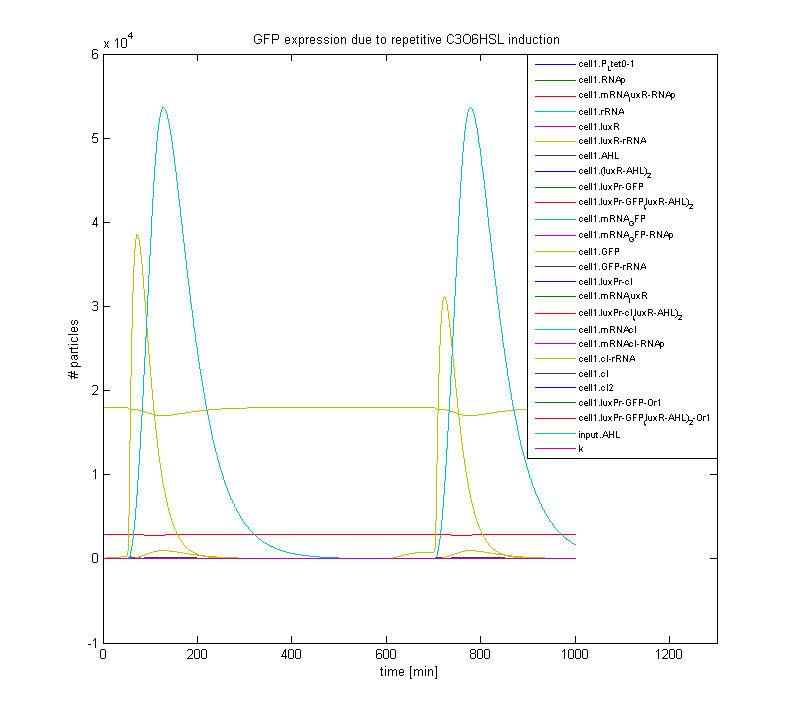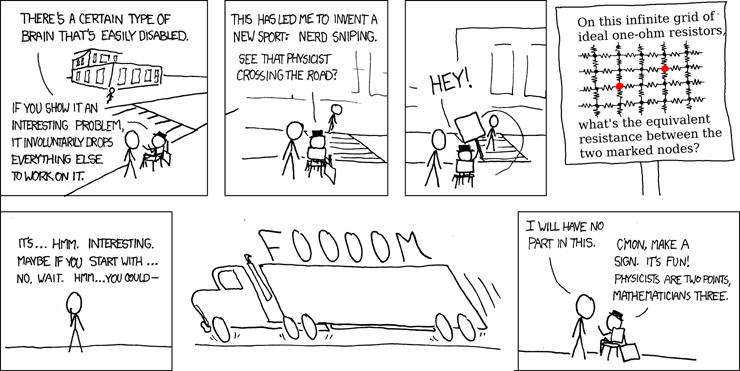Team:Groningen/Modeling
From 2008.igem.org
| Line 8: | Line 8: | ||
To examine the workings of our designs on the multi-cell level we are developing a routine in Matlab which can predict the collective behaviour of the designed cells on a two-dimensional grid. Hopefully this will help us to gain more insight in the characteristics of AHL exchange between the cells. | To examine the workings of our designs on the multi-cell level we are developing a routine in Matlab which can predict the collective behaviour of the designed cells on a two-dimensional grid. Hopefully this will help us to gain more insight in the characteristics of AHL exchange between the cells. | ||
| + | |||
| + | The figure below displays the response of a gene regulatory network, which incorporates an HSL sensing mechanism and a GFP reporter gene. Shown is the pulse-shaped GFP expression as a response to HSL induction, after induction the system relaxes towards its original state, which makes it susceptible for repetitive stimuli. | ||
[[Image:figforsite.png|500px|Academic building in Groningen|center]] | [[Image:figforsite.png|500px|Academic building in Groningen|center]] | ||
Revision as of 13:10, 29 July 2008
Modeling
To gain insight into the working of our designs we try to develop reliable and realistic models.
The ODE solvers incorporated in the SimBiology package, for Mathworks' Matlab, are employed to model the genetic design on the single-cell level, displaying the variations in concentration of all relevant substances over time.
To examine the workings of our designs on the multi-cell level we are developing a routine in Matlab which can predict the collective behaviour of the designed cells on a two-dimensional grid. Hopefully this will help us to gain more insight in the characteristics of AHL exchange between the cells.
The figure below displays the response of a gene regulatory network, which incorporates an HSL sensing mechanism and a GFP reporter gene. Shown is the pulse-shaped GFP expression as a response to HSL induction, after induction the system relaxes towards its original state, which makes it susceptible for repetitive stimuli.
 "
"


